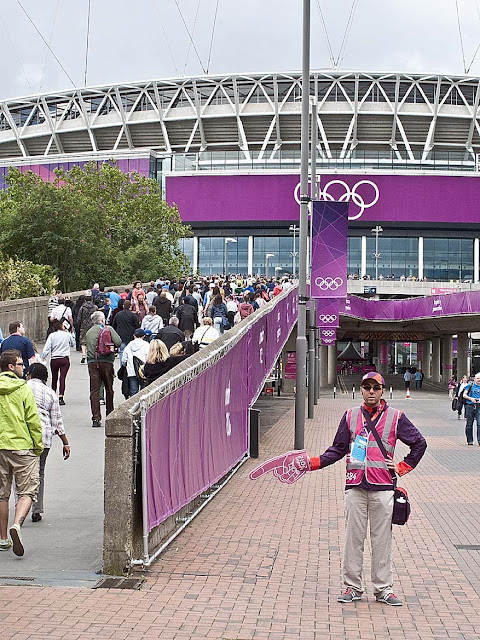- Red: green 1:1
- Orange: blue 1:2
- Yellow: violet 1:3
The exercise is in two parts. The first is to produce one photograph for each combination of primary and secondary colours, adjusting the distance, focal length or framing when you shoot so that you compose the picture to the proportions listed above - or at least close to them.
For the second part, the rules are not so strict. Produce three or four images which feature colour combinations that appeal to you. They can be combinations of two colours or more. The object here is to demonstrate that there is no single ' correctness' to complementary colours, but be aware of any imbalance in the combination and study its effect.
Red and green.
Yellow and violet.
The second part of this exercise, colour combinations that appeal to me.
Below I've given the reasons why I chose the following four photographs but first the colour balance. The first three are balanced in their own way, with the pictures of sailing boats, the colours are almost the ratios suggested by Von Goethe. In the third picture white and gold help correct the imbalance between red and blue,or it might be that I am used to seeing these colours together so accept the proportions. The colours in the last photograph grabs your attention, but unlike the previous images have no balance that I can see. The small yellow flowers do help lift the picture somewhat.
Pink and yellow.
Blue and pink.
Red, white and blue.
Pink and violet: Olympic colours.
The exercise says: produce three or four images that feature combinations of colours that appeal. The pictures above caught my attention when I first saw them, they don't necessarily appeal, but do convey a strong message. The first two photographs of the sailing dinghies were taken on a very overcast day, everything seemed flat and uninteresting, until I saw the boats on the lake, the fluorescent colours of the sails, really stood out, they lifted my spirits on what was a very dismal day. The next two pictures were taken during my visit to London for the Olympic games. The Town Crier, dressed in red, white and blue, the colours of the Union Jack, was an example of national pride, which seemed to be everywhere. Next I saw the baskets of flowers, these were a perfect match to the colours of London 2012, again something that could be seen all over the city. Together with the red phone boxes and London Bobby complete the scene, summing up my impression of London during the Olympics. Obviously I'm attracted to strong, bold colours so I'm adding an extra photograph, something more subtle, just shades of green.
Greens at Angelsey abbey.


















































